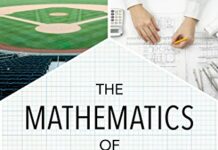
Ebook Info
- Published: 2013
- Number of pages: 298 pages
- Format: PDF
- File Size: 7.64 MB
- Authors: Alfred S. Posamentier
Description
Two veteran math educators demonstrate how some “magnificent mistakes” had profound consequences for our understanding of mathematics’ key concepts. In the nineteenth century, English mathematician William Shanks spent fifteen years calculating the value of pi, setting a record for the number of decimal places. Later, his calculation was reproduced using large wooden numerals to decorate the cupola of a hall in the Palais de la Decouverte in Paris. However, in 1946, with the aid of a mechanical desk calculator that ran for seventy hours, it was discovered that there was a mistake in the 528th decimal place. Today, supercomputers have determined the value of pi to trillions of decimal places. This is just one of the amusing and intriguing stories about mistakes in mathematics in this layperson’s guide to mathematical principles. In another example, the authors show that when we “prove” that every triangle is isosceles, we are violating a concept not even known to Euclid – that of “betweenness.” And if we disregard the time-honored Pythagorean theorem, this is a misuse of the concept of infinity. Even using correct procedures can sometimes lead to absurd – but enlightening – results.Requiring no more than high-school-level math competency, this playful excursion through the nuances of math will give you a better grasp of this fundamental, all-important science.
User’s Reviews
Reviews from Amazon users which were colected at the time this book was published on the website:
⭐The book’s concept is interesting, and could have resulted in a fascinating book. However, it suffers from two great drawbacks that make the reading experience not very pleasurable.First of all, the entire text is in dire need of copyediting by a native speaker of English. Almost every sentence in the book shows evidence of a disregard for current English stylistic standards. Just as an example, consider the following beginning of a paragraph: “While we speak of mistakes on public display, consider the clock atop the tower on St. Marien Church…” (meaning, I suppose, something like: “Still on the subject of mistakes on public display, consider the clock atop the tower of St. Marien Church”). The book is literally full of such stylistically awkward formulations. If you’re at all sensitive to such issues, the book will cause you considerable discomfort.Secondly, arrangement and presentation of the examples are in need of editing. Most of the book is arranged according to domains of manthematics (Arithmetic, Algebra, Geometry and Probability and Statistics) but the first chapter is a hodge-podge of “Noteworthy mistakes by famous mathematicians”. However, even within the individual chapters, the examples are not arranged in a discernibly heuristic or logical order. I would expect a book about mistakes to provide a rationally constructed discussion on the types of mistakes, the source or cause of the mistakes, and how such mistakes can best be avoided, with examples to suit each part of the discussion. Instead, we are presented with a more or less unordered set of anecdotes about mistakes, sometimes with (not very clear) mathematical explanations.In short, this is a book with a lot of potential, but in need of a firm editorial hand.I bought this book to my Kindle, without first looking at the offered preview pages. I will try in future to be more patient.
⭐pages 56f Fermi made a deliberate mistake to protest the photo session he was obliged to take part in: he would not accidentally switch h with e (keeping the square in the right place, nonetheless). Plus, the diagram doesn’t make any sense. He made it all up. The “mistake” is not a mistake. Google “Fermi mistake” and find “Fermi’s Witty Response: A Blackboard with Two, Not One, ‘Mistakes’ ?”.
⭐I was lost in some of the portions, but particularly enjoyed the statistics/probability section. Found it clear and lucid with two great messages: 1) do not trust intuition and 2) look at alternative solutions. I passed the book on to a PhD in mathematics, who will get even more from it.
⭐Took me a few attempts to pass College Algebra, so I was pleased that the book wasn’t written above my learning level. Read this for the stories of colossal mistakes, and also as a refresher on some mathematical aspects that will intrigue the lay reader.
⭐I enjoyed the content quite a bit. I’d forgotten, for example, how to prove that all triangles are isosceles. BUT trying to read it in expanded type on a Kindle was a disaster. Almost all of the arithmetic and algebraic material was at the Kindle’s smallest size and did not expand with the text. With my eyes, my magnifying glass was necessary but INsufficient.
⭐Is very important for the students to know than even great mathematicians also commit errors along their carreerThanks
⭐For people interested in history of Mathematics, but not in too much formality, that’s a nice read. Funny how even weel-known stories still bring much pleasure!
⭐The printing as it appeared in Kindle was faulty. The examples that were given were light, small and downright illegile.
Keywords
Free Download Magnificent Mistakes in Mathematics in PDF format
Magnificent Mistakes in Mathematics PDF Free Download
Download Magnificent Mistakes in Mathematics 2013 PDF Free
Magnificent Mistakes in Mathematics 2013 PDF Free Download
Download Magnificent Mistakes in Mathematics PDF
Free Download Ebook Magnificent Mistakes in Mathematics



